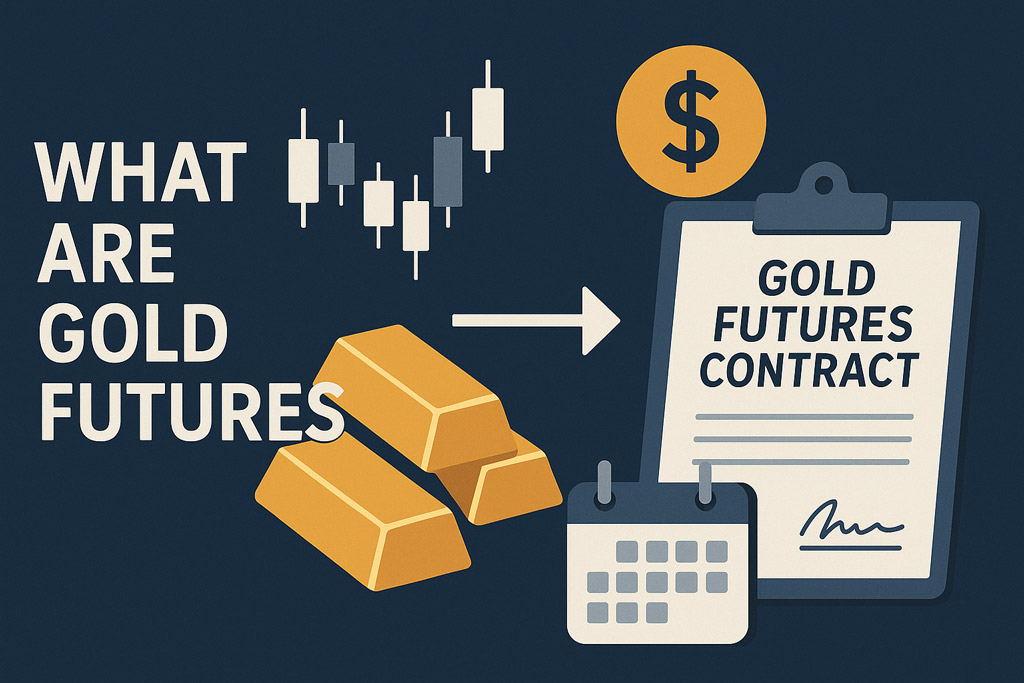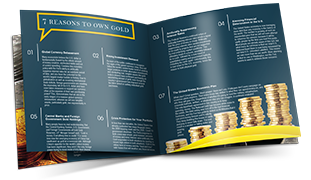 Gold futures are a little-known yet highly influential part of the gold market. These contracts allow investors to speculate on the yellow metal’s performance. While bought and sold like standard paper assets, gold futures also play a significant role in shaping the spot price of gold. Understanding this critical market dynamic provides valuable insight into the behind-the-scenes mechanics of the world’s most active precious metals market.
Gold futures are a little-known yet highly influential part of the gold market. These contracts allow investors to speculate on the yellow metal’s performance. While bought and sold like standard paper assets, gold futures also play a significant role in shaping the spot price of gold. Understanding this critical market dynamic provides valuable insight into the behind-the-scenes mechanics of the world’s most active precious metals market.
What are gold futures?
Gold futures are legally binding agreements between buyers and sellers for the delivery of a certain amount of gold at a specific date in the future. These contracts are publicly traded on precious metals platforms such as the New York Mercantile Exchange (NYMEX), Chicago Mercantile Exchange (CME), and Shanghai Gold Exchange (SGE).
Technically, gold futures involve the sale or purchase of gold for future delivery or receipt, depending on whether you’re the buyer or seller. However, the vast majority of traders never hold the contract until the expiration date, preferring to sell or offset the contract to realize gains or limit losses.
Most traders in the gold futures market are speculators looking to capitalize on short-term price movements rather than take possession of actual gold. They aim to profit from brief periods of volatility, not hold long-term positions. For these traders, dealing with the storage, insurance, and transport costs of physical gold simply doesn’t make sense. This is nearly the opposite of the physical bullion market, where long-term holding and minimal trading activity are the norm.
Although gold futures are available with expiration dates many months or even years into the future, most traders focus on near-term contracts. These short-term futures have the advantage of more activity and higher liquidity, making it easier for traders to enter and exit positions quickly. While gold futures with shorter time frames offer flexibility and convenience, they still carry considerable risk due to market volatility and leverage.
Anatomy of a Gold Futures Contract
Generally, gold futures can be broken down into the following components:
- Contract Size: The amount of gold involved in the exchange.
- Gold Purity: The percentage of pure gold in the physical asset.
- Price: The price of gold in the contract, measured in ounces.
- Delivery Time: The specific month and year the contract settles or expires.
- Delivery Terms: Where and how the physical gold is delivered (if applicable).
- Tick Size: The smallest allowable price movement, often $0.10 per troy ounce.
- Margin Requirements: The minimum deposit required to trade the contract.
Futures exchanges set clear, standardized rules for gold contracts to help make trading more consistent, transparent, and secure.
How Gold Futures Affect Spot Prices
While future contracts represent the expectations of gold’s future price performance, the spot price of gold shows the current market value of the yellow metal for immediate delivery. Despite this difference, there’s a close connection between gold futures and the gold spot price.
Investors often look at the real-time spot price to determine where they think gold will move, informing their futures contracts. Similarly, the average value of near-term futures contracts heavily influences the spot price.
Another way to differentiate the two is that gold futures involve trading paper gold assets, while the spot price represents the value of physical gold, such as bullion bars and coins. This dynamic, two-way relationship is crucial to help investors understand how gold is priced in futures trading and immediate transactions.
👉 Related Read: 10 Factors that Influence Silver Prices
How to Trade Gold Futures
Step 1: Understand What You’re Trading
The first step to trading gold futures is understanding exactly what you’re buying or selling. As mentioned before, a gold futures contract is a legal agreement to trade a specific amount of gold at a predetermined price on a set future date.
Investors can either take a long or short position based on their expectations of market trends.
- Long Position: Taken when you expect gold to rise. This involves the buying of gold futures contracts.
- Short Position: If you anticipate a price drop. This is the selling of a futures contract.
Put more simply, long positions are bullish, and shorts are bearish on gold.
Keep in mind that most traders close out their contracts before the delivery date. So, while gold futures technically involve the eventual delivery of physical gold, most traders never reach that stage.
Step 2: Open a Futures Trading Account
Although major exchanges like NYMEX and CME create and standardize gold futures contracts, retail investors access these markets through brokerage platforms, not directly through the exchanges.
It’s similar to how you use trading apps to invest in the S&P 500 or Dow Jones: you place orders through a platform, while the actual trades are executed behind the scenes by brokers and exchanges.
Keep in mind that gold futures trading platforms are less common than standard stock trading apps. However, several well-established brokers in the U.S. offer direct access to futures markets, including:
- Interactive Brokers
- TD Ameritrade (thinkorswim)
- Charles Schwab
- NinjaTrader
- TradeStation
- Tastytrade
Step 3: Pick the Right Gold Contract
Unlike trading more conventional assets, gold futures have standardized contract sizes, each tailored to different capital “availabilities”, investment goals, risk tolerance, and time horizons.
The three most common sizes of gold futures contracts include:
| Contract Type | Size | Best For | Approx. Margin Requirement |
|---|---|---|---|
| Standard (GC) | 100 troy ounces | Central banks, institutional traders, and large-scale traders | ~$7,500–$8,000 |
| Micro (MGC) | 10 troy ounces | Precise trades for experienced, well-capitalized traders | ~$1,000 |
| Mini (1OZ) | 1 troy ounce | Beginners and budget-conscious retail traders | ~$115 |
Although other contract sizes exist, these are the most commonly traded on US exchanges. Foreign exchanges such as the Shanghai Gold Exchange (SGE) and the Multi Commodity Exchange (MCX) in India offer their own standardized gold futures contracts tailored to their regional markets.
Step 5: Manage Your Risk Wisely
As mentioned before, gold futures use leverage, allowing investors to control a larger position than their deposits would otherwise allow. In other words, you can invest a lot more money than you have. This drastically embellishes the potential gains and losses of each trade.
Thus, it’s crucial to properly protect yourself from unnecessary risk. Generally, investors shouldn’t ever leverage more money than they’re comfortable losing. You also might want to consider setting stop-loss orders, which trigger an automatic sell once prices hit a certain point.
Step 6: Close or Roll Your Position
After you’ve executed a gold futures trade, it’s time to monitor the position. You generally have three choices:
- Close: The most common approach when trading gold futures is to exit the position before the contract’s expiration. This finalizes your gains or losses while preventing you from having to take physical delivery of the metal.
- Hold: If a contract is held until the expiration date, the investor will have to take physical ownership (or deliver in the case of a sale) of the bullion. Keep in mind that most traders exit their position before the contract deadline.
- Roll: There’s also an option to prolong the contract by “rolling” your position. This involves the closure of the current contract and the opening of a new one with a later expiration date.
Advantages of Gold Futures
- Lower Barrier of Entry – Anyone can sign up for futures exchanges and start trading futures with minimal investment.
- Liquidity – Major exchanges allow for quick, easy, and secure trades, allowing investors to enter or exit positions flexibly.
- No Physical Storage – Investors don’t have to worry about managing or storing physical gold since price contracts are entirely digital.
Considerations of Gold Futures
- High Volatility – Futures markets are characterized by choppy, unpredictable swings as investors’ sentiment fluctuates, resulting in unstable price action.
- Complexity – There’s a steep learning curve required to become a capable futures trader due to market nuances such as margin requirements and market trends.
- Leverage Risks – Gold futures can be traded with leverage, which maximizes gains and risks, increasing the potential for serious losses.
- No Immediate Ownership – Most futures contracts aren’t brought to fruition, meaning investors most likely won’t end up with physical gold.
- Speculation – Trading gold futures is a guessing game at its core, as investors speculate on where gold prices will go in the future, increasing the risk level and uncertainty of each trade.
Are gold futures a good investment?
Gold futures represent a unique way to invest in gold’s price action, but these speculative contracts aren’t for every investor. As mentioned before, most futures contracts are offloaded before maturity, meaning investors never take ownership of physical gold. The shorter time frame and speculation involved in gold contracts make them more trades than investments.
If you’re interested in learning more about diversifying with gold for the long term, the Scottsdale Bullion & Coin team can help. Contact us today by calling toll-free at 1-888-812-9892 or using our live chat function. We’d be happy to answer your questions and offer personalized investing advice to help you reach your goals.


